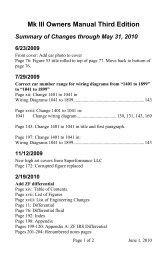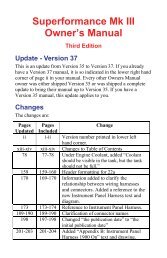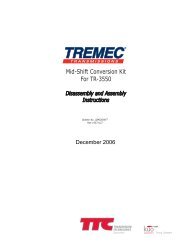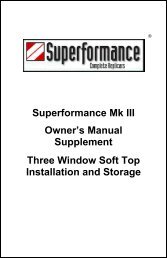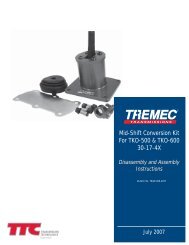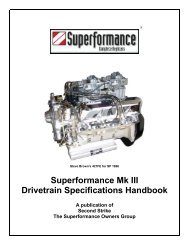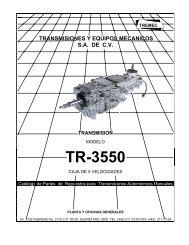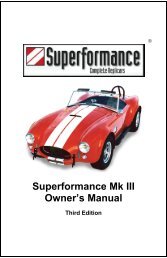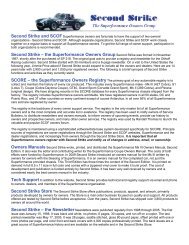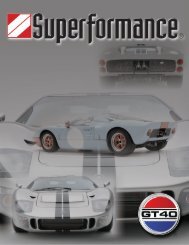Carburetor Calculator - Second Strike
Carburetor Calculator - Second Strike
Carburetor Calculator - Second Strike
You also want an ePaper? Increase the reach of your titles
YUMPU automatically turns print PDFs into web optimized ePapers that Google loves.
<strong>Second</strong> <strong>Strike</strong> Page 9<br />
The Newsletter for the Superformance Owners Group January 17, 2008 / September 5, 2011<br />
Also note that the calculated pressure drop in the carburetor<br />
goes up with airflow squared. At 100% VE, the pressure drop<br />
would go up with rpm squared. However, because VE is<br />
falling off with rpm squared, the pressure drop tends to be<br />
more linear with rpm.<br />
Horsepower Curve<br />
The horsepower curve is calculated as follows.<br />
The peak horsepower and rpm are input.<br />
The peak torque rpm is assumed to occur at 80% of the peak<br />
horsepower rpm. The peak torque is assumed to be 1/85% or<br />
1.176 times the torque at peak horsepower. From this the<br />
horsepower at the torque peak is calculated.<br />
The assumed horsepower curve is a second order polynomial<br />
through the horsepower peak and horsepower at peak torque<br />
rpm with the peak at the horsepower peak.<br />
Figure 6: Example 1 Volumetric Efficiency Curve<br />
At 100% volumetric efficiency, airflow is linear with rpm.<br />
However, the variation in volumetric efficiency causes the<br />
airflow to be non-linear with rpm. See Figure 7. The actual<br />
airflow is included in the <strong>Calculator</strong> output table.<br />
For our Example 1 engine:<br />
Peak power = 550<br />
Peak power rpm = 6000<br />
Torque at peak power = 5250 * 550 / 6000 = 481<br />
Peak torque rpm = .8 * 6000 = 4800<br />
Peak torque = 481 / .85 = 566<br />
Power at peak torque = 566 * 4800 / 5250 = 517<br />
The horsepower peak and horsepower at peak torque are<br />
shown in bold. The assumed horsepower curve through these<br />
points is shown in Figure 8:<br />
Figure 7: Airflow vs. rpm<br />
Note that the airflow at 6000 rpm is 741 cfm at 100% VE and<br />
630 at the calculated 85% VE. Ignoring VE would bump one<br />
carburetor size.<br />
Ignoring VE in the Holley sizing equation can and<br />
often does result is selecting a carburetor that is<br />
one or two sizes too big.<br />
Figure 8: Assumed Horsepower Curve



